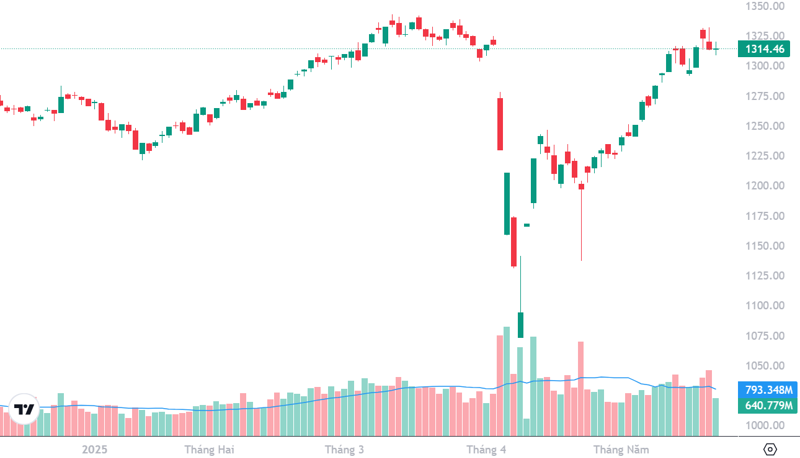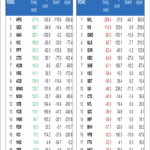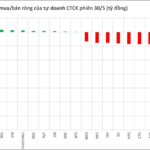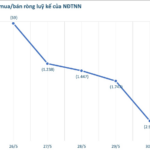The VN-Index’s fourth consecutive weekly gain couldn’t mask the underlying weakness as profit-taking pressure mounted last week. Most of the weekly gains were achieved in the first two sessions, after which stocks turned under significant selling pressure, failing to surpass the 1340-point peak.
Experts also assessed that the market’s reversal last week could lead to more prominent technical divergences for the VN-Index. Although the index briefly surpassed its previous peak, the market lacked explosive growth and instead relied on a few large-cap stocks to maintain its position.
Meanwhile, the hot money that had flowed into small and medium-sized stocks over the past two weeks showed signs of withdrawal, especially during the last session when this group underwent a broad correction. However, experts viewed this profit-taking activity as typical and not indicative of a “wave end” whenever speculative stocks experienced heavy selling pressure. The strong upward momentum was primarily observed in stocks with low bases and those severely impacted by the countervailing tax incident in April. The inflow of money into this group could reflect expectations for fundamental changes rather than speculation. While short-term profit-taking behavior indicates a premature profit mindset, it could also be a coincidence with the VN-Index’s inability to surpass its peak.
Nevertheless, experts remain cautious about the changes at the end of the week, especially with the less favorable technical factors and the lack of supportive information. The State Bank’s announcement of critical information related to the gold market after trading hours could also influence investor sentiment. Experts still anticipate a slight market adjustment and observe the support around the 1320-1300-point level.
Nguyen Hoang – VnEconomy
Did the VN-Index, which briefly surpassed the March 2025 peak, fail to achieve an explosive growth state? Last week, most of the gains were made in the first two days, and in the end, the index closed below the 1340-point mark.

If the index fails to break through convincingly past the old peak and continues to weaken with low liquidity, simultaneously breaking through the nearest critical support levels, the likelihood of a double-peak scenario will increase. This phase requires caution and careful observation of subsequent confirmation signals.
Nghiem Sy Tien
Nguyen Thi My Lien – Head of Analysis, Phu Hung Securities Joint Stock Company
Observing the upward movement, there is a clear rotation of money from the group trading in the upper channel to the group of low-priced stocks. However, the price increase was rapid, and the money also withdrew and took early profits in this group. In my opinion, the upward movement lacks the leading group’s guidance and may not be sustainable. The outstanding performance of a few large-cap stocks supports the market, while the general situation of the codes is under adjustment pressure. The percentage of stocks above MA20 also shows signs of peak divergence. Based on these factors, I believe the index has failed to pass the old peak area in this comeback. If the diffusion rate does not improve, the adjustment period may prolong.
Nghiem Sy Tien – Investment Strategy Specialist, KBSV Securities
The VN-Index briefly surpassed the March peak but did not explode and closed below 1340 points, indicating a failed peak test. Buying power was cautious at high prices, as evidenced by the concentration of the rise margin at the beginning of the week and then weakening. However, to confirm a complete failure, we need to observe next week’s developments, especially the ability to hold critical support levels. If selling pressure increases and the index falls deeply, the risk of adjustment will increase.
Le Dieu Linh – Director of Individual Customers, Rong Viet Securities
At the end of the last trading session of May, the VN-Index fell 9.26 points and closed at 1332.6 points. However, the VN-Index’s slight rise above the March 2025 peak and subsequent retreat below the 1340-point mark are insufficient to conclude a failed peak test. The market is still fluctuating in a positive accumulation zone, and the index’s inability to break through strongly may reflect investors’ caution before strong resistance levels and await clearer supportive information.
The concentration of the rise margin at the beginning of the week is a positive signal, indicating the presence of money, but it is rotating between industries. What needs to be monitored next week is liquidity, market breadth, and the reaction in the 1340–1350-point range to assess whether the market has enough strength to surpass the actual peak.
I believe the 1340-point mark is a strong resistance area, so investors are cautious. Next week, if liquidity improves and the market holds the 1330–1340 range, the possibility of surpassing the peak remains.
Nguyen Hoang – VnEconomy
The most notable development last week was the vibrant trading trend in small and medium-sized stocks. However, by the end of the week, profit-taking activities had intensified. Are these still just T+ surfing waves? The market often considers the rapid rise of hot stocks as a “wave-end” signal. What do you think?
Nghiem Sy Tien – Investment Strategy Specialist, KBSV Securities
Last week, money flowed into small and medium-sized stocks, creating a certain buzz. The increase in profit-taking at the end of the week in this group is also understandable, reflecting the short-term trading mindset of a group of investors who want to realize quick profits. However, this development does not always correspond to the “wave-end” signal. It is more important to assess the quality of money in industries and the general market context. If the market still has growth momentum and these stocks have a solid foundation, the uptrend may be more sustainable than just surfing.

Money Flow Trend: “Out of Breath” at the Old Peak, Does the Market Still Have a Chance to Break Through?
Nguyen Thi My Lien – Head of Analysis, Phu Hung Securities Joint Stock Company
I agree with the view that the rise of speculative stocks (or penny stocks) could be a risk signal for the market being at the “wave-end.” However, the current context does not reflect this. The upward momentum in low-priced stocks with high diffusion rates is not localized, especially in the industrial, aquatic, textile, and rubber groups. The broad recovery indicates that the market expects internal changes as Vietnam may make progress in negotiations with the US. This does not reflect speculation but coincides with the positive rotation of money in the market.
Le Dieu Linh – Director of Individual Customers, Rong Viet Securities
Last week, medium and small-cap stocks continued to attract strong money inflows, with many codes recording impressive gains. For example, NTL rose 19.38% during the week, demonstrating the appeal of this group to investors. However, by the end of the week, profit-taking pressure had intensified, causing many codes such as CTD, HVN, HAH, PDR, and KBC to fall sharply, reflecting the short-term surfing mindset still prevailing.
Nevertheless, it is premature to conclude that this is a ‘wave-end’ signal. In reality, money is still rotating between industries and stocks with their own stories, indicating that the market still offers many opportunities for discerning investors. The vibrancy of medium and small-cap stocks last week also reflected the short-term money flow seeking quick profit-making opportunities amid the resistance encountered by large-cap stocks. History shows that hot trading trends are only worrisome if they are accompanied by gradually diminishing liquidity and a lack of fundamental supportive factors. With many current midcap codes, there is a clear differentiation: some codes with their own stories continue to attract sustainable money flow. Therefore, investors need to be discerning in their choices instead of viewing the entire group as speculative stocks.
Nguyen Hoang – VnEconomy
The upward momentum of the VN-Index has slowed significantly in the last 10 sessions. Last week, liquidity declined rapidly in the latter sessions, and many technical indicators showed divergence. In last week’s discussion, you also noted this signal. Technically, how do you assess the risk of the VN-Index forming a double-peak model?
Nghiem Sy Tien – Investment Strategy Specialist, KBSV Securities
The upward momentum of the VN-Index has noticeably slowed in the past 10 sessions. The rapid decline in liquidity in the latter sessions of this week, combined with the negative divergence on many dynamic technical indicators, is increasing concerns about the market’s potential peak formation. If the index fails to break through convincingly past the old peak and continues to weaken with low liquidity, simultaneously breaking through the nearest critical support levels, the likelihood of a double-peak scenario will increase. This phase requires caution and careful observation of subsequent confirmation signals.

I believe the index has failed to pass the old peak area in this comeback. If the diffusion rate does not improve, the adjustment period may prolong.
Nguyen Thi My Lien
Le Dieu Linh – Director of Individual Customers, Rong Viet Securities
Indeed, a closer look at the past 10 sessions reveals a significant slowdown in the upward trend. The VN-Index touched the 1345–1350-point zone, approaching the March 2025 peak, but could not break through. Accompanying this was a slight downward divergence between the index and dynamic momentum indicators such as RSI and MACD – a factor to consider. Theoretically, a double-peak model may be forming, but it is not yet confirmed until the VN-Index penetrates the “neckline” (neckline) support area around 1315–1320 points with high liquidity. If this happens, the risk of a deep adjustment will increase. However, if the index continues to fluctuate in the accumulation zone above 1320 and dynamic money returns to the pillar groups, a new base price may form instead of a trend reversal. I believe this is a “supply and demand testing” phase rather than a clear signal of a trend reversal.
Additionally, the State Bank’s announcement of inspection conclusions on May 30, 2025, regarding serious violations in gold trading activities at several large enterprises such as SJC, PNJ, DOJI, and Bao Tin Minh Chau after trading hours aimed to avoid shocking the market and allow more time for information absorption. Still, it undoubtedly influenced stock market sentiment. The combination of technical factors and negative news from the gold industry could increase selling pressure, especially in stocks related to the inspected enterprises. However, to confirm the double-peak model on the VN-Index, it is necessary to monitor the market’s response to the support area around 1320 points and the improvement in liquidity. If the index holds this support area and money returns, the potential for recovery remains. Conversely, if the VN-Index breaks through the support area with high liquidity, the likelihood of forming a double-peak model will become more apparent. Investors should closely monitor market developments and related information to make appropriate investment decisions during this sensitive phase.
Nguyen Thi My Lien – Head of Analysis, Phu Hung Securities Joint Stock Company
The VN-Index formed a peak around the 1340-point zone in mid-March and fell sharply in early April. The downward momentum coincided with April 2, when President Trump announced the countervailing tax table. This exogenous factor did not originate from market dynamics, and the subsequent decline occurred rapidly, almost without forming a clear “neckline” accumulation zone according to the double-peak model theory.
In my opinion, the selling pressure around the 1340-point mark mainly reflects profit-taking psychology. Technically, I lean towards the possibility of the market following a “pendulum oscillation” model. If the VN-Index loses the 1300-point mark, it may return to a sideways state within the 1220–1300-point range.

With many current midcap codes, there is a clear differentiation: some codes with their own stories continue to attract sustainable money flow. Therefore, investors need to be discerning in their choices instead of viewing the entire group as speculative stocks.
Le Dieu Linh
Nguyen Hoang – VnEconomy
Short-term investors who correctly caught the medium and small-cap stocks last week made good “harvests.” Did you participate in surfing this group, and have you taken profits yet?
Le Dieu Linh – Director of Individual Customers, Rong Viet Securities
I do not recommend trend surfing, but I closely monitor short-term opportunities in medium and small-cap stocks with fundamental supportive factors. Indeed, some codes like NTL, HAH, and PDR recorded impressive gains last week, and I implemented risk management measures, including partial profit-taking or reducing ratios when the market showed widespread profit-taking signals.
In the short term, I prioritize capital preservation, awaiting clearer opportunities instead of “chasing the wave.” Like many other investors, we allocated a portion of our portfolio to medium and small-cap stocks, selecting those with solid fundamentals and stable liquidity. As the market reacted strongly at the end of the week, I proactively took partial profits to protect our gains. Flexibility is vital in the current market.
Nguyen Thi My Lien – Head of Analysis, Phu Hung Securities Joint Stock Company
I allocated a portion of my portfolio to medium-cap stocks but less to small-cap or penny stocks due to their unclear internal stories. Money is currently differentiating strongly again and expecting internal changes in each industry, so selection is crucial. Some stocks in my portfolio have achieved good short-term performance, so I have taken partial profits. I still hold the remaining portion and will observe the market’s process of retesting the 1300-point area. The sectors I will focus on this phase are Real Estate, Banking, Utilities, and Public Investment.
Nghiem Sy Tien – Investment Strategy Specialist, KBSV Securities
I have partially profit-taken as I observed the market weakening at the old peak area and the increasing risk of adjustment. I will use the subsequent cash portion to increase the ratio when the index returns to critical support levels.
[IR AWARDS] June 2025 Disclosure Calendar: Mark Your Dates
The upcoming periodic information disclosures in June encompass several notable events in the stock market. These include the release of the PMI, the effective portfolio and market classification by MSCI, disclosure and effectiveness of the FTSE ETF and VNM ETF portfolios, the socio-economic situation report for May, the maturity of VN30F2506 futures contracts, and the Fed’s announcement of FOMC meeting results.
The Stock Market Slump: Shares Tumble Across the Board
The pressure to secure profits after a streak of consecutive gains, coupled with the fatigue of leading stocks, dragged the benchmark away from its previous peak. As the week’s final trading session concluded, the VN-Index witnessed a decline of over 9 points, with more than 230 stocks drowning in red.



![[IR AWARDS] June 2025 Disclosure Calendar: Mark Your Dates](https://xe.today/wp-content/uploads/2025/06/HinhT6_01-150x150.png)

















